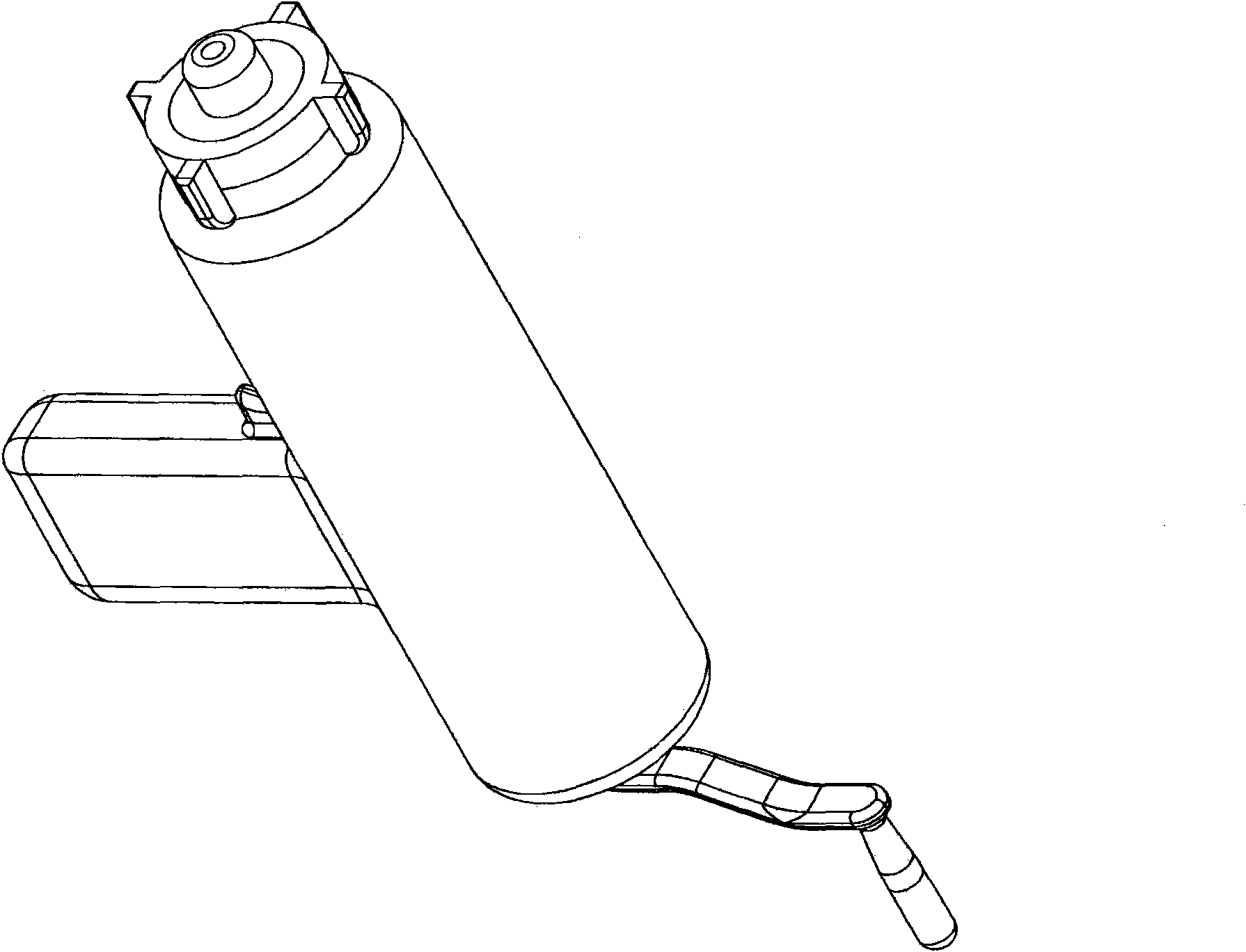Double-cross-surface laser-directional minimally-invasive cranial drill
A laser and face-to-face technology, which is applied in the field of medical instruments, can solve the problems of high cost of instrument measurement, large opening and guiding errors, and complicated positioning and guiding, and achieve the effect of simple operation, easy operation, and improved success rate
- Summary
- Abstract
- Description
- Claims
- Application Information
AI Technical Summary
Problems solved by technology
Method used
Image
Examples
Embodiment 1
[0013] Embodiment 1, a kind of double intersecting laser directional minimally invasive cranial drill (refer to figure 1 , 2 , 3, 4, 5) are used to take out the hematoma in the head and locate the hole drill. There is a cylindrical body made of high-temperature resistant plastic or steel, two ends of the body are provided with bearings, and one end of the bearing is equipped with a protruding drill bit. An electric drive mechanism and a manual drive mechanism are provided, the motor of the electric drive mechanism is fixed in the body, and the motor shaft is coaxially connected with the drill bit shaft that penetrates into the body. The drill bit shaft has a small gear, which meshes with a large gear, and the upper end of the large gear shaft extends upwards with another small gear, and this other small gear meshes with the large gear of the hand crank shaft to form a manual drive mechanism . The body has a cross-plane laser that emits intersecting lines that are co-linear ...
Embodiment 2
[0014] Embodiment 2, a kind of manual electric dual-purpose drill used for taking out the foreign matter in the head and positioning the opening of the present invention, the body, the driving mechanism arranged in the body and the drill bit coaxially connected with the output shaft of the driving mechanism, in addition, the body has two A set of planar laser emitters, the laser emitter emits two planar lights that intersect each other and intersect on the axis of the drill bit, that is, the intersection line and the axis of the drill bit are collinear. Such as figure 1 , 2, shown in 3,4, among the figure, 6.drill bit locking device, 21.drill bit, 9,10,16,17. transmission gear, .2,3,4,5 planar light laser device, 13. transmission shaft, 14 .Handle and internal battery, 19. Connecting rod, 20. Hand rocker handle, 11. Start switch, 12. Sealed waterproof casing, 15. Motor, 7. Laser beam adjustment ring, 8. Planar light laser connecting ring. A group of plane light lasers 2 and...
Embodiment 3
[0016] Embodiment 3, a kind of positioning perforation electric drill for taking out the foreign matter in the head of the present invention, organic body 81, the electric drive mechanism 82 that is arranged in the body and the drill bit 80 that is coaxially connected with the output shaft of the drive mechanism, the front end of the body has Plane light lasers 83, 84, 85, 86 are fired intersecting the bit axis. Such as Image 6 , 7 As shown, wherein, the planar light emitted by the planar light lasers 83, 85 is the same plane, which is the vertical plane of the main view; the planar light emitted by the planar light lasers 84, 86 is the same plane, which is the horizontal plane of the main view. Among the figure, plane light lasers 83, 85 are fixed up and down on the front end of the body, and emit the same plane light, which is coplanar with the axis of the motor and the axis of the drill bit. The adjustable planar light lasers 84, 86 are arranged on the adjustment ring 87...
PUM
 Login to View More
Login to View More Abstract
Description
Claims
Application Information
 Login to View More
Login to View More - R&D
- Intellectual Property
- Life Sciences
- Materials
- Tech Scout
- Unparalleled Data Quality
- Higher Quality Content
- 60% Fewer Hallucinations
Browse by: Latest US Patents, China's latest patents, Technical Efficacy Thesaurus, Application Domain, Technology Topic, Popular Technical Reports.
© 2025 PatSnap. All rights reserved.Legal|Privacy policy|Modern Slavery Act Transparency Statement|Sitemap|About US| Contact US: help@patsnap.com



